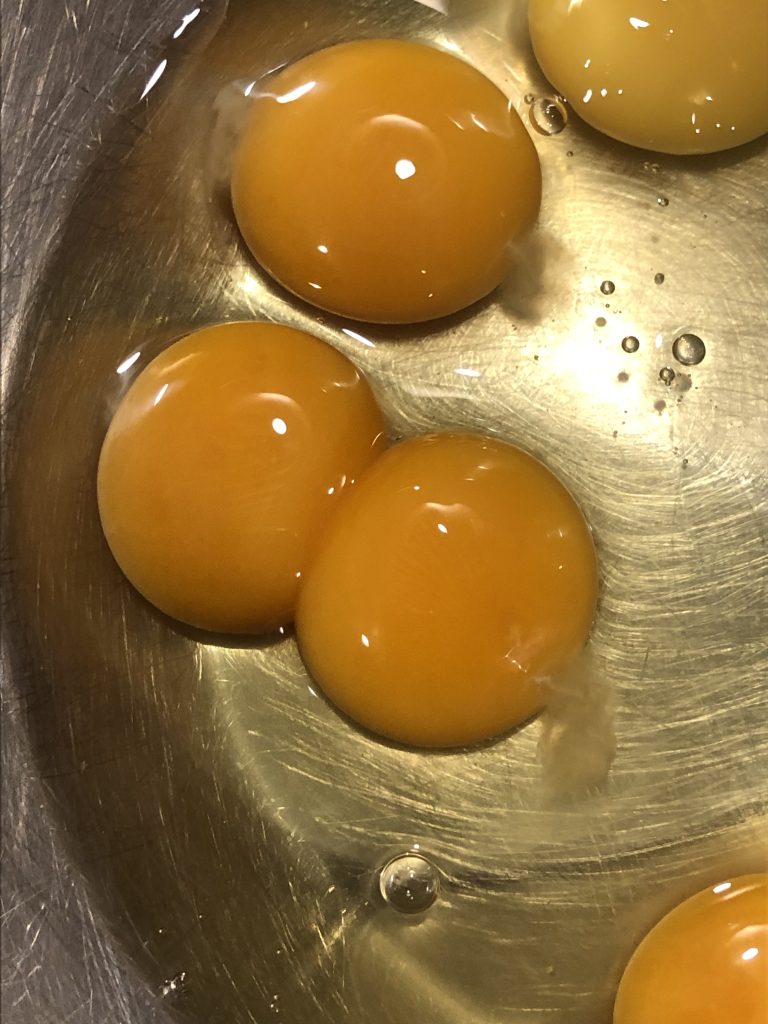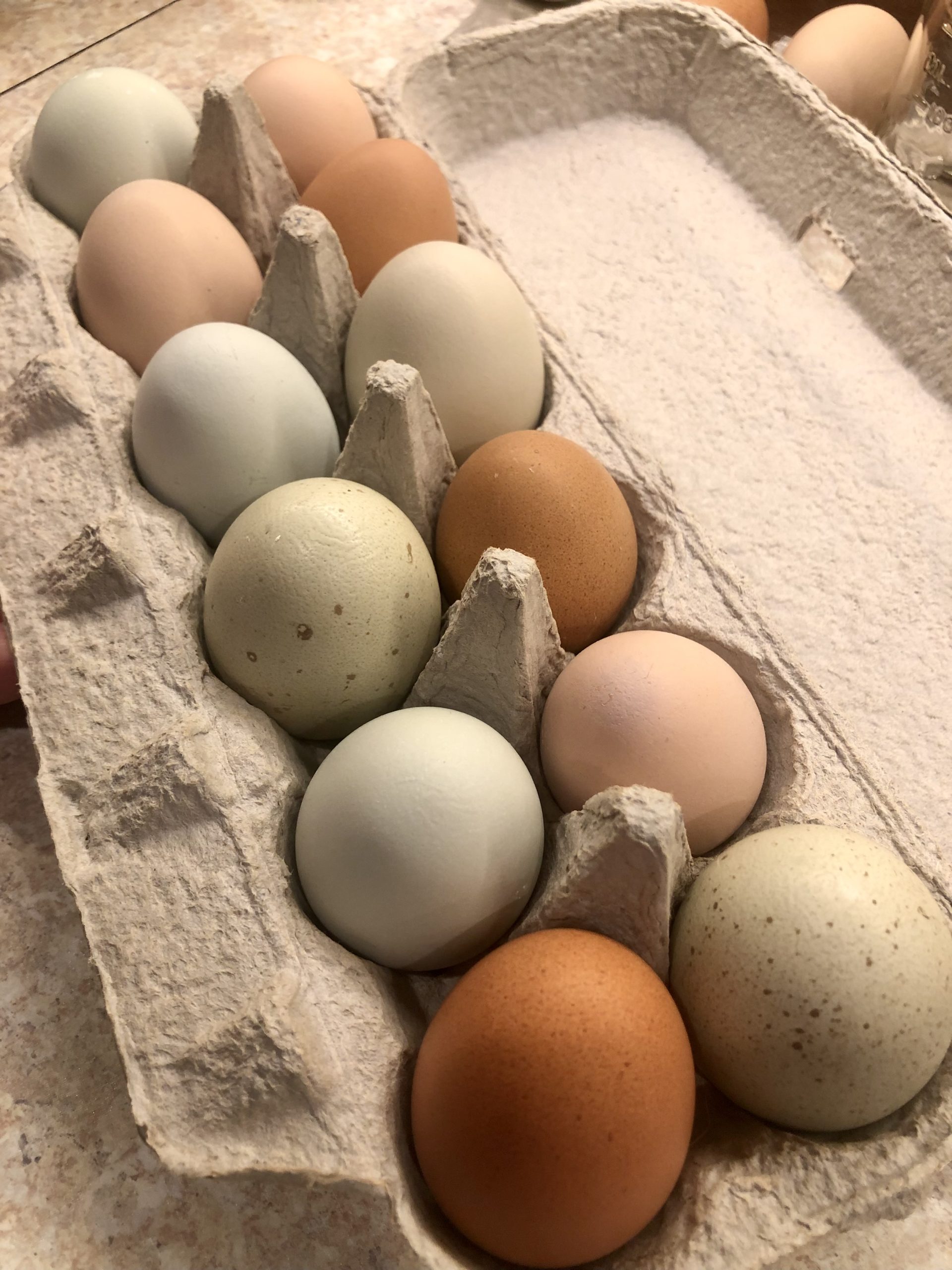Prior to raising chickens, I’d never given much thought to their egg cycle. I envisioned a bucolic scene, farmers carrying their egg gathering baskets and collecting eggs every day, year round.
But the reality? It’s a bit different. Let’s dig in.
Most hens will start laying eggs around the age of 18 weeks or so. They may not lay regularly initially, or there could be some hiccups in production like a ‘fairy egg’ (tiny egg that may or may not have a yolk in it) or a double yolker – sometimes there’s a whole egg (shell and all!) inside of another egg.

Once their body has figured out the production, they will start laying pretty regularly. For many breeds they will lay an egg almost every day. This will continue throughout the year, winter included, during their first year of life.
Once their second winter rolls around, all of that changes. As the days shorten, this signals their body that it’s time to molt. This is the process of losing their old, somewhat shabby feathers and regrowing fresh new ones in their place prior to spring. They may lose basically all of their feathers at once or lose them in patches.
The process of regrowing all new feathers requires a lot of protein. Their body will redirect the protein that they eat from egg production to feather production. Some people choose to use a game bird feed with higher protein percentage or even supplement meat/meal worms/fish to help the chickens regrow their feathers.
The other factor is that the laying cycle is dependent on light. Typically chickens need to have about 14-16 hours of sunlight to signal their body to lay an egg. As the days grow shorter, they lay less frequently and some will even stop altogether for a few months.
Some people will use supplemental light inside of the coop to keep their hens laying throughout the winter. However, as hens are hatched with all their potential future eggs in their ovaries (and therefore have a finite number of eggs they could potentially lay), having them lay throughout the winter will shorten their egg laying years and stress their bodies. I personally choose to give my girls a break during the winter. *As a disclaimer, please research adding light to the coop – particularly heat lamps and the fire hazard they pose, prior to making whichever decision suits your farm best.
So how can you get eggs year round if you have to deal with the aforementioned biological hurdles? Staggering the ages of your flock could be the solution. When first getting chickens the temptation is to get all the chickens you could possibly want to have your ideal sized flock immediately – or at least that was my experience. But if you do that, you’ll then have a lot of hens all stopping egg production at the same time once you hit your second winter.
If you add a few each year, you’ll have a constant supply of eggs. And if the new hens were hatched in the spring, they should start laying in the fall just as the older hens are slowing down. I currently have more than enough eggs right now (with some to share!) because I do have a staggered flock.
Now, admittedly, I didn’t necessarily plan this from the beginning. ‘Chicken Math’ is real and I love getting different breeds, so it kind of just happened on its own.
How serendipitous.

